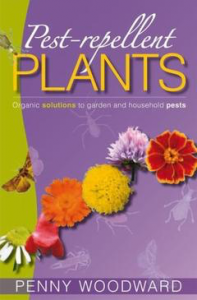
THERE is a hidden treasure with plants forming the basis of a sculpture garden in Canberra.
It is the Fiona Hall Fern Garden at the Australian National Gallery and quite possibly more tourists than locals know of it.

In 1996 Mary Eagle, then senior curator of Australian art, approached Fiona Hall, one of Australia’s foremost photographers and sculptors, to consider a work for the gallery.
Hall proposed a discrete garden, more like landscape architecture than art. An out-of-sight, unused courtyard space on the easterly side of the gallery with 23-metre-high concrete walls was selected.
The design features 58 200-year-old mature Dicksonia Antarctica tree ferns 2.6 metres tall, with a system of paths, fountains and seating.
The garden opened in 1998 and is based on the spiral form of the fern frond, a symbol of healing and rejuvenation. It was Hall’s first major permanent landscape installation.
The main path is decorated in vortex patterns like the movement of an eddying stream with white, river pebbles that came from Collector.
The complete story is at nga.gov.au/sculpturegarden/fern.cfm
“LONGER flowering periods and extended dry summer spells are likely to be faced by gardeners in the future.” No, not a climate change warning for Australia, but Britain.
A new report, “Gardening in a Changing Climate 2017”, published by the Royal Horticultural Society in conjunction with Reading University, sets out the implications of climate change and suggests ways to mitigate the effects in the home garden.
RHS climate scientist Eleanor Webster said: “The role of gardens in delivering ecosystems will become increasingly important. An understanding of climate patterns will help gardeners prepare to deal with more weather extremes.”
The report’s conclusions will be equally applicable to gardeners here. The publication date is June 7 and can be seen at rhs.org.uk/climate-change
FOR anyone with a voracious appetite for all things gardening, I recommend joining the UK Royal Horticultural Society; it’s worth it just for the monthly journal “The Garden”. Plus on any visit to the UK, members can visit the society’s five gardens with the premier garden at Wisley in Surrey.
You will not be alone, membership is more than 475,000! As number 767, I’ve been a member for 38 years. Information at rhs.org.uk/membership

 For example, beyond being great for dwarf hedges along paths, Santolina chamaecyparissus is ideal for making sachets to stop moths attacking clothes. And garlic can be sprayed to combat wooly aphids, spider mites, pear and cherry tree slug and many more pests (plant garlic now!).
For example, beyond being great for dwarf hedges along paths, Santolina chamaecyparissus is ideal for making sachets to stop moths attacking clothes. And garlic can be sprayed to combat wooly aphids, spider mites, pear and cherry tree slug and many more pests (plant garlic now!).
Which makes Penny Woodward’s new book “Pest-Repellent Plants” (Hyland House Publishing) an indispensible addition to the garden library.
Jottings…
- Sasanqua camellias, the toughies of the camellia family and perfect for hedges, are in flower at garden centres. They take full sun and provide colour through winter.
- Add a good handful of garden lime to each barrow of leaves in the compost heap.
- Shred leaves using the mower and add them straight on to garden beds as mulch. They break down by late spring and add nutrients to the garden.
- If available, add manure to the compost heap, not directly on to the garden. But if the garden is not being used for the next few months, dig the manure well into the garden.
Who can be trusted?
In a world of spin and confusion, there’s never been a more important time to support independent journalism in Canberra.
If you trust our work online and want to enforce the power of independent voices, I invite you to make a small contribution.
Every dollar of support is invested back into our journalism to help keep citynews.com.au strong and free.
Thank you,
Ian Meikle, editor




Leave a Reply